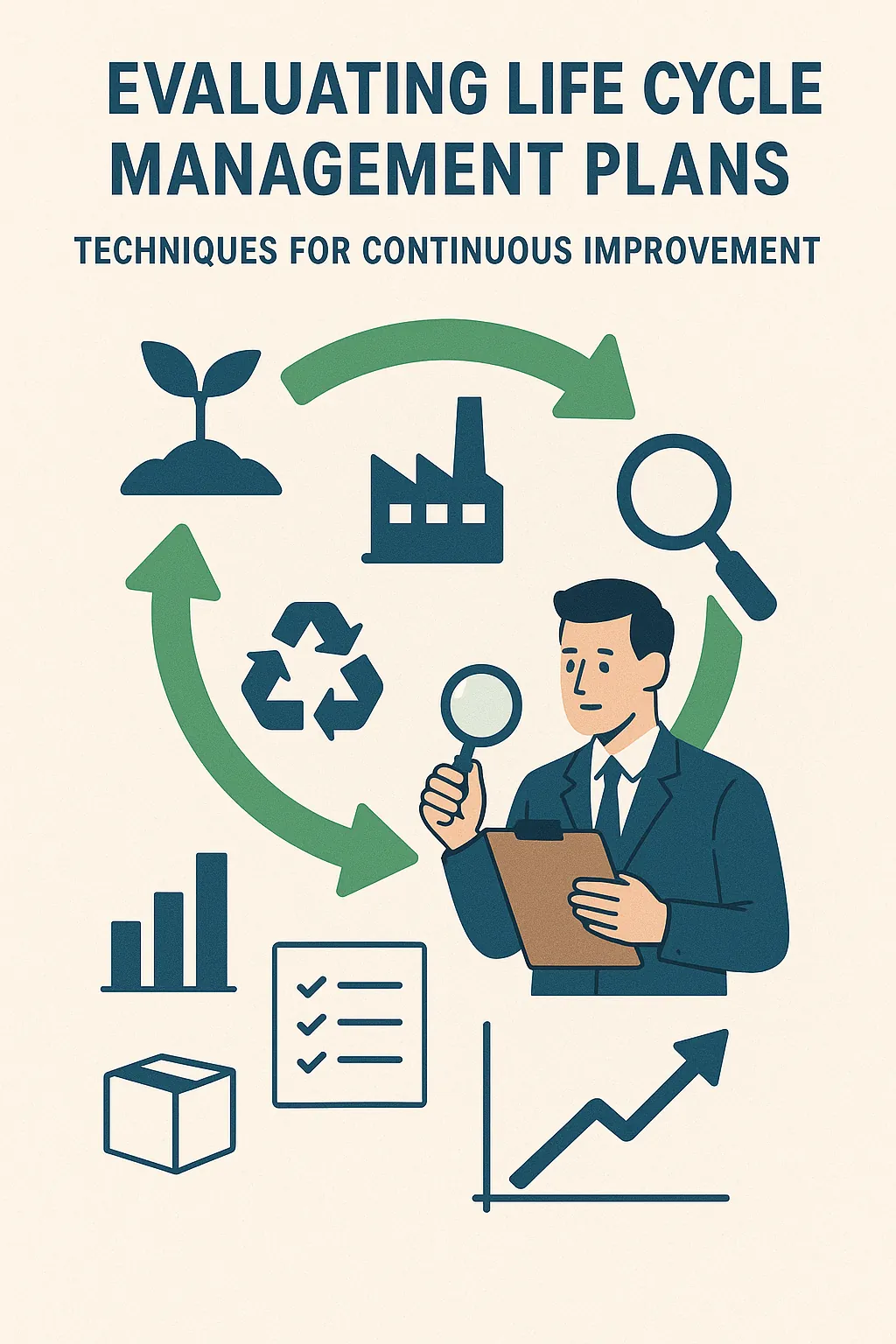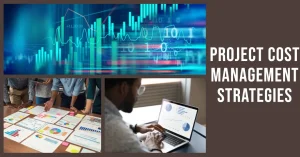Introduction to Life Cycle Management Plans
A Life Cycle Management Plan (LCMP) serves as a critical framework that guides projects from inception to completion. This structured approach ensures that all phases of a project are meticulously planned, executed, and evaluated, ultimately contributing to the project’s success.
Definition of Life Cycle Management Plans
A Life Cycle Management Plan is a comprehensive document that outlines the processes, methodologies, and strategies employed throughout the various phases of a project. It encompasses the entire project life cycle, which typically includes initiation, planning, execution, monitoring, and closure. The LCMP is designed to provide a clear roadmap for project teams, ensuring that all stakeholders are aligned and that resources are utilized efficiently.
The Significance of Life Cycle Management Plans in Ensuring Project Success
The importance of LCMPs in project management cannot be overstated. Here are several key reasons why these plans are vital:
- Structured Approach: LCMPs provide a structured framework that helps project teams navigate the complexities of project execution. This structure minimizes risks and enhances the likelihood of achieving project objectives.
- Resource Optimization: By clearly defining roles, responsibilities, and timelines, LCMPs facilitate better resource allocation and management. This optimization leads to cost savings and improved efficiency.
- Stakeholder Engagement: An effective LCMP fosters communication and collaboration among stakeholders. By involving all relevant parties in the planning process, the plan ensures that everyone is on the same page, which is crucial for project success.
- Continuous Improvement: LCMPs are not static; they are designed to evolve. By regularly assessing and updating the plan based on feedback and performance metrics, project teams can implement continuous improvement practices that enhance overall project outcomes.
Overview of the Life Cycle Phases in Project Management
Understanding the life cycle phases is essential for effective life cycle management. The typical phases include:
- Initiation: This phase involves defining the project scope, objectives, and feasibility. It sets the foundation for the entire project.
- Planning: During this phase, detailed plans are developed, including timelines, budgets, and resource allocation. This is where the LCMP is formalized.
- Execution: The execution phase is where the project plan is put into action. Project teams carry out tasks, manage resources, and ensure that deliverables are met.
- Monitoring and Controlling: This phase involves tracking project progress against the plan. Key performance indicators (KPIs) are used to assess whether the project is on track and to identify any necessary adjustments.
- Closure: The final phase involves completing all project activities, obtaining stakeholder approval, and conducting a post-project evaluation to capture lessons learned.
Why Evaluate Life Cycle Management Plans?
Evaluating life cycle management plans is crucial for ensuring that projects remain aligned with organizational goals and can adapt to changing circumstances. Here are several key points that highlight the necessity of this evaluation process:
Benefits of Regular Assessments:
- Risk Mitigation: Regular evaluations help identify potential risks early in the project life cycle. By assessing the effectiveness of existing management plans, teams can proactively address issues before they escalate, thereby reducing the likelihood of project failure or delays. This proactive approach not only safeguards project outcomes but also enhances stakeholder confidence in project management practices.
- Resource Optimization: Continuous assessment allows project teams to analyze resource allocation and utilization. By identifying areas where resources may be underutilized or overextended, organizations can optimize their investments, ensuring that time, budget, and human resources are used efficiently. This optimization leads to cost savings and improved project performance, ultimately contributing to the organization’s bottom line.
Common Pitfalls of Stagnant Life Cycle Management Frameworks:
- Inflexibility: A life cycle management plan that is not regularly evaluated can become rigid and unresponsive to new challenges or opportunities. This stagnation can lead to outdated practices that do not reflect current industry standards or technological advancements, resulting in inefficiencies and missed opportunities for innovation.
- Lack of Stakeholder Engagement: When evaluation processes are neglected, there is a risk of disengaging stakeholders who may feel their input is not valued. This can lead to a disconnect between project objectives and stakeholder expectations, ultimately affecting project buy-in and success.
The Role of Evaluation in Aligning Projects with Organizational Goals:
- Strategic Alignment: Regular evaluations ensure that life cycle management plans are continuously aligned with the broader strategic objectives of the organization. By assessing how well projects contribute to these goals, project teams can make informed decisions about prioritization and resource allocation, ensuring that efforts are directed towards initiatives that drive organizational success.
- Feedback Loop for Improvement: Evaluation creates a feedback loop that fosters a culture of continuous improvement. By systematically reviewing and refining life cycle management plans, organizations can adapt to changing market conditions, stakeholder needs, and technological advancements, ensuring that their project management practices remain relevant and effective.
Techniques for Assessing Life Cycle Management Plans
Evaluating and enhancing life cycle management plans is crucial for ensuring that projects meet their objectives efficiently and effectively. Here are several actionable techniques that Quality Assurance Managers and project teams can employ to assess existing life cycle management frameworks:
1. SWOT Analysis
Conducting a SWOT analysis is a foundational technique for evaluating life cycle management plans. This method involves:
- Strengths: Identifying what aspects of the life cycle management plan are working well. This could include effective resource allocation, strong team collaboration, or successful risk management strategies.
- Weaknesses: Recognizing areas that need improvement, such as communication gaps, delays in project phases, or insufficient training for team members.
- Opportunities: Exploring external factors that could enhance the life cycle management plan, such as emerging technologies, new methodologies, or market trends that could be leveraged for better outcomes.
- Threats: Assessing potential risks that could hinder the effectiveness of the life cycle management plan, including regulatory changes, competitive pressures, or resource shortages.
By systematically analyzing these four components, project teams can gain a comprehensive understanding of their current life cycle management framework and identify areas for improvement.
2. Benchmarking Against Industry Standards and Best Practices
Benchmarking is a powerful technique that involves comparing the life cycle management plan against established industry standards and best practices. This process includes:
- Identifying Key Performance Indicators (KPIs): Establishing relevant KPIs that reflect the success of life cycle management processes, such as project completion rates, budget adherence, and stakeholder satisfaction.
- Comparative Analysis: Evaluating how the current life cycle management plan measures up against those of leading organizations in the same industry. This can reveal gaps in performance and highlight successful strategies that could be adopted.
- Continuous Learning: Engaging with industry forums, attending conferences, and reviewing case studies to stay updated on best practices and innovative approaches in life cycle management.
Through benchmarking, organizations can not only assess their current performance but also set realistic goals for improvement based on proven methodologies.
3. Stakeholder Feedback
Gathering insights from stakeholders is essential for a holistic evaluation of life cycle management plans. This technique involves:
- Surveys and Interviews: Conducting structured surveys or interviews with project teams, quality assurance managers, and other stakeholders to gather qualitative and quantitative feedback on the effectiveness of the life cycle management processes.
- Focus Groups: Organizing focus group discussions to facilitate open dialogue among stakeholders, allowing them to share their experiences, challenges, and suggestions for improvement.
- Feedback Loops: Establishing regular feedback mechanisms to ensure that stakeholder insights are continuously integrated into the life cycle management plan, fostering a culture of collaboration and responsiveness.
By actively seeking and incorporating stakeholder feedback, organizations can enhance their life cycle management frameworks to better meet the needs of all parties involved.
4. Data Analytics
Leveraging data analytics is a modern approach to assessing life cycle management plans. This technique includes:
- Performance Metrics: Utilizing quantitative data to track performance metrics over time, such as project timelines, cost variances, and resource utilization rates. This data can provide objective insights into the effectiveness of the life cycle management plan.
- Predictive Analytics: Employing predictive analytics to forecast potential issues and outcomes based on historical data. This can help project teams proactively address challenges before they escalate.
- Visualization Tools: Using data visualization tools to present complex data in an easily digestible format, enabling stakeholders to quickly grasp performance trends and make informed decisions.
By harnessing the power of data analytics, organizations can gain a deeper understanding of their life cycle management processes and identify specific areas for enhancement.
Identifying Areas for Improvement
A robust Life Cycle Management Plan (LCMP) is essential for ensuring that projects are executed efficiently and effectively. For Quality Assurance Managers and project teams, continuous improvement of these frameworks is crucial. Here are key areas to focus on when evaluating and enhancing existing life cycle management plans:
1. Evaluating Project Timelines and Deliverables for Efficiency
- Timeline Analysis: Regularly review project timelines to identify bottlenecks or delays. Utilize tools like Gantt charts or project management software to visualize progress and pinpoint areas where timelines can be optimized.
- Deliverable Assessment: Examine the quality and timeliness of deliverables. Are they meeting the set standards? Gathering feedback from stakeholders can provide insights into whether deliverables align with expectations and project goals.
2. Assessing Resource Allocation and Management Practices
- Resource Utilization: Conduct a thorough analysis of how resources (human, financial, and material) are allocated across projects. Are resources being used to their full potential? Identifying underutilized resources can lead to more efficient project execution.
- Management Practices: Evaluate current management practices to ensure they support effective resource allocation. Implementing agile methodologies or lean practices can enhance flexibility and responsiveness in resource management.
3. Analyzing Stakeholder Engagement and Communication Effectiveness
- Stakeholder Feedback: Regularly solicit feedback from stakeholders to assess their level of engagement and satisfaction. This can be done through surveys, interviews, or focus groups.
- Communication Channels: Review the effectiveness of communication strategies. Are the right channels being used to reach stakeholders? Ensuring that communication is clear, timely, and tailored to the audience can significantly improve stakeholder relationships and project outcomes.
4. Recognizing Technological Gaps and Opportunities for Automation
- Technology Assessment: Identify any technological gaps that may hinder project efficiency. This could involve outdated software, lack of integration between tools, or insufficient data analytics capabilities.
- Automation Opportunities: Explore areas where automation can streamline processes. Implementing automated reporting, task management, or data collection can free up team members to focus on higher-value activities, ultimately enhancing project performance.
Implementing Continuous Improvement Strategies
Continuous improvement is essential for ensuring that projects not only meet their objectives but also adapt to changing circumstances and stakeholder needs. For Quality Assurance Managers and project teams, implementing effective strategies based on evaluation findings can significantly enhance the overall effectiveness of life cycle management frameworks. Here are several key strategies to consider:
1. Developing a Structured Plan for Incorporating Feedback
Creating a structured approach to gather and incorporate feedback is vital for continuous improvement. This involves:
- Regular Feedback Loops: Establishing mechanisms for collecting feedback from stakeholders at various stages of the project life cycle. This can include surveys, interviews, and focus groups to gather insights on what is working and what needs improvement.
- Documentation of Findings: Maintaining a comprehensive record of feedback and evaluation results to identify trends and areas for enhancement. This documentation should be easily accessible to all team members involved in the project.
- Actionable Insights: Transforming feedback into actionable items by prioritizing issues based on their impact on project outcomes and stakeholder satisfaction.
2. Utilizing Agile Methodologies to Adapt Life Cycle Management Plans
Agile methodologies offer a flexible framework that can be particularly beneficial for life cycle management. Key aspects include:
- Iterative Processes: Implementing short cycles of planning, execution, and review allows teams to adapt quickly to changes and incorporate improvements in real-time.
- Cross-Functional Teams: Encouraging collaboration among diverse team members fosters innovation and ensures that various perspectives are considered when making adjustments to the life cycle management plan.
- Continuous Learning: Emphasizing a culture of learning where teams regularly reflect on their processes and outcomes, leading to ongoing enhancements in project execution.
3. Establishing Key Performance Indicators (KPIs) to Measure Improvement
To effectively assess the impact of implemented changes, it is crucial to establish clear KPIs. This involves:
- Defining Relevant Metrics: Identifying specific, measurable indicators that align with project goals and objectives. These could include metrics related to time, cost, quality, and stakeholder satisfaction.
- Regular Monitoring and Reporting: Setting up a system for tracking KPIs over time to evaluate the effectiveness of improvements. Regular reporting can help keep the team focused on performance and accountability.
- Benchmarking: Comparing performance against industry standards or past project outcomes to gauge success and identify further areas for improvement.
4. Training and Empowering Project Teams to Adopt New Practices
For continuous improvement to be successful, it is essential to invest in the development of project teams. This can be achieved through:
- Comprehensive Training Programs: Offering training sessions that focus on new methodologies, tools, and best practices related to life cycle management. This ensures that all team members are equipped with the necessary skills to implement changes effectively.
- Empowerment and Ownership: Encouraging team members to take ownership of their roles in the improvement process fosters a sense of responsibility and motivation. This can be achieved by involving them in decision-making and allowing them to propose solutions.
- Supportive Environment: Creating a culture that supports experimentation and innovation, where team members feel safe to share ideas and learn from failures, can lead to significant advancements in project management practices.
By implementing these strategies, Quality Assurance Managers and project teams can effectively enhance their life cycle management plans, ensuring that they remain relevant and effective in achieving project goals. Continuous improvement is not just a one-time effort but a sustained commitment to excellence in project management.
Conclusion
The significance of a robust Life Cycle Management Plan (LCMP) cannot be overstated. As we have explored throughout this discussion, the continuous evaluation and enhancement of these frameworks are essential for ensuring project success and delivering quality outcomes. Here’s a recap of the evaluation techniques and improvement strategies we discussed:
- Evaluation Techniques: We highlighted several methods for assessing existing LCMPs, including performance metrics analysis, stakeholder feedback collection, and benchmarking against industry standards. These techniques provide valuable insights into the effectiveness of current practices and identify areas for improvement.
- Improvement Strategies: We also examined various strategies for enhancing LCMPs, such as implementing agile methodologies, fostering cross-functional collaboration, and utilizing advanced project management tools. These strategies not only streamline processes but also promote adaptability in an ever-changing project landscape.
Encouraging a culture of continuous improvement is vital for Quality Assurance Managers and project teams. By fostering an environment where feedback is valued and innovation is encouraged, organizations can ensure that their LCMPs remain relevant and effective. This culture empowers teams to proactively identify challenges and implement solutions, ultimately leading to higher quality deliverables and increased stakeholder satisfaction.
Find out more about Shaun Stoltz https://www.shaunstoltz.com/about/.
This post was written by an AI and reviewed/edited by a human.



